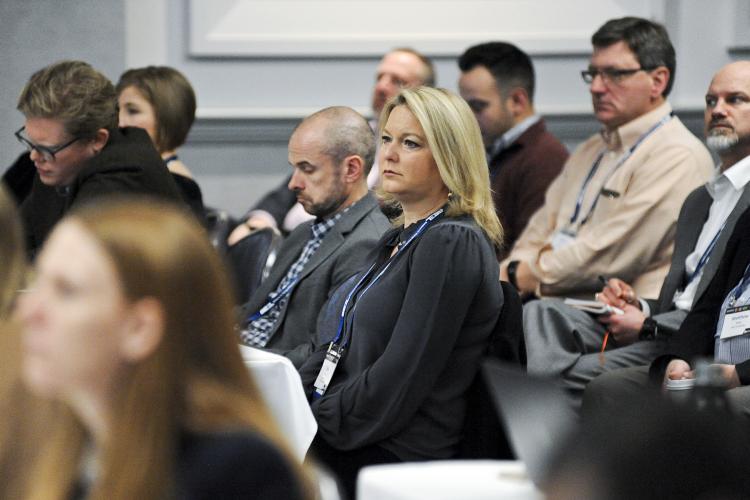
The year 2007 was an unforgettable year for multiple reasons. Harry Potter and the Deathly Hollows (the final book of the series) was released, Al Gore won the Nobel Peace Prize for his work on Climate Change, and it sparked the start of the subprime mortgage crisis which sent America into the greatest recession since the great depression. But, perhaps more influential than anything else was when Steve Jobs introduced the iPhone to the world. The iPhone took the world by storm, completely changing the way society interacts with technology and the way technology interacts with society. Fast forward to the present day and the iPhone still looks largely the same, but the connected market developed around the iPhone continues to expand at a breakneck speed. This has created new opportunities for the interoperability of smart technology and customer engagement in all business sectors.
Similar to the iPhone, over the last 12 years, the energy efficiency industry has transformed from providing rebates on CFLs and 90 AFUE furnaces to connected LEDs and Cold Climate Heat Pumps. Our industry has also benefited from access to AMI and connected device data, allowing for improvements in existing programs and the development of new personalized programs to fit customer needs. These technologies have shown great promise and will continue to shape efficiency programs and their ability to engage with the customer in meaningful ways. However, as these technologies become ubiquitous in energy efficiency programming, new questions, opportunities and barriers arise.
This was the framework for a workshop discussion at the 2019 Midwest Energy Solutions Conference. The workshop, Harnessing Technology to Engage Customers, relied on technical experts to introduce six promising technologies currently being applied to energy efficiency programming so the audience could understand the present and future customer engagement potential of these and other similar technologies. These technologies included, smart thermostats, home assistant products, utility marketplaces, customer and utility data analytics, and connected HVAC equipment. More information on each of these technologies can be found within the workshop handout and within the workshop slides.
Upon hearing about the current and future opportunities for these technologies, the workshop facilitator steered the audience into a group discussion by asking attendees to consider what the key barriers are to the deployment of these technologies in current energy efficiency programs. In response to this, it was noted that one challenge is the need for these new technologies to work within traditional DSM frameworks (regulatory bodies, evaluation and savings attribution) that were designed well before the technologies were introduced. Other barriers identified included data privacy and security, lack of interest in energy usage data, limited offerings for renters, and effectively meeting the needs of all customer types. Additionally, a question was raised asking who pays for the analysis of all the data that is now available?
Although many barriers were raised, there were also an equal number of solutions or recommendations for how to overcome these barriers. In terms of data privacy and security, it was recommended that the industry learn from the ways other industries address these concerns, such as the banking industry. Other recommendations were to utilize data to personalize programs to each specific customer, bundle programs by recommending specific programs and a seamless way to enroll based on data analysis, and work to get technology, such as a smart thermostat, in the home and operable as it will do the work for you once installed. It was also suggested that it is important to ensure customers are not inundated with information and data, as they may quickly become overwhelmed and ultimately disengaged. At the same time, how information is presented to customers should be considered, as different customers prefer data to be delivered in different ways.
Next, the workshop facilitator asked the group to consider how programs can ensure all customers, including low-income customers, have the opportunity to participate. Workshop participants noted that it is important to understand that low-income customers already regularly participate in and can benefit from programs that leverage technology. This segment is particularly interested in learning about ways they can reduce their energy consumption since typically, a larger portion of their income goes towards energy costs. Programs have also had great success in getting out into the communities to directly engage and educate this segment. However, it is important to consider not all customers within this segment have access to Wi-Fi, so programs need to be creative on how information is delivered.
Just like the invention of the iPhone dramatically changed society over the last 12 years, technological advancements in the energy industry will continue to alter the course of energy efficiency planning and programming. It’s difficult to say where these technologies will take us but considering that we already have the ability for our thermostat, smart speaker, appliances, HVAC and water heating equipment, and phone to communicate and determine the most efficient, least cost and most opportune time to operate, we are living through another transformational moment like the iPhone. It is important to also consider the impacts these technologies can have when incorporated together. This approach enables utilities to maximize customer touch-points and ensure all customer segments are engaged. This also enables utilities to maximize the customer experience and provide meaningful services beyond energy delivery. By continuing discussions like what was had during the 2019 MES workshop, we can ensure that transformation best meets efficiency goals and the needs of customers and utilities alike.
Do you have thoughts on how utility programs can leverage technology to improve customer engagement? Do you have ideas on what MEEA can do in this space? Reach out to Ian Blanding at iblanding@mwalliance.org.